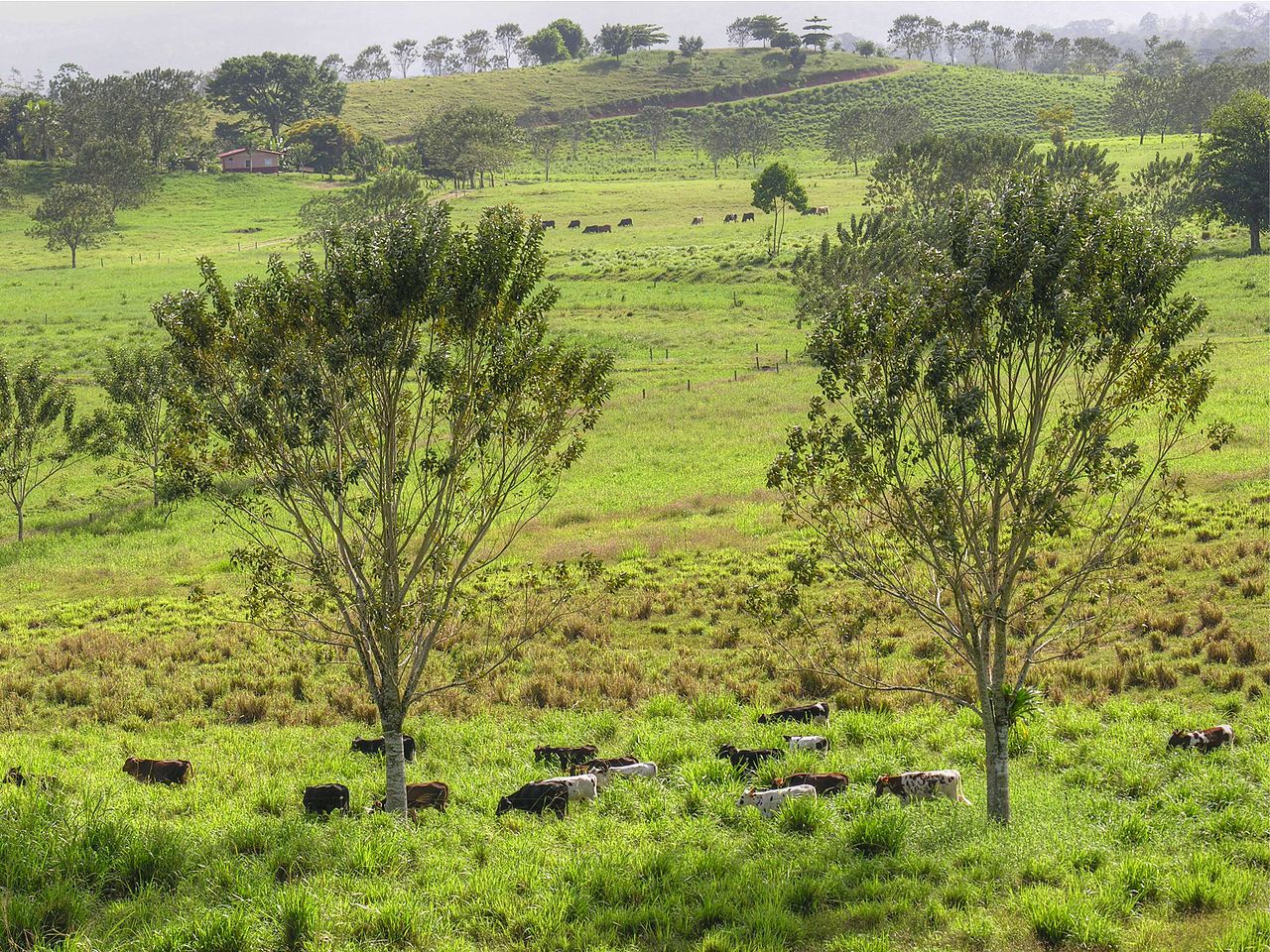The debate on what is better for the environment and by extension many ecosystem services, high intensity conventional farming using large amounts of fertiliser and pesticides on mostly homogenous areas or low intensity possibly organic farming in a heterogeneous landscape seems to be a no-brainer. High intensity farms are pressing into natural habitats, pesticides are impacting pollinators and natural pest controls such as beetles or spiders (Hole et al., 2005, Biological Conservation) and the overuse of fertilisers are contaminating ground and surface water leading to eutrophication and even drinking water pollution.
However, on a larger scale this question seems to be more difficult to answer. The problem is that in theory, and most of the recent scientific literature supports the hypothesis that the product yield of organic farming is lower by 5 to 34 % (e.g. De Ponti et al., 2012, Agricultural Systems; Seifert et al., 2012, Nature). In return, to maintain the production levels, more land has to be devoted to agriculture, potentially destroying natural habitat. This leaves the following question: On a landscape scale, what is environmentally better, a large area of organic farming with a decent environmental footprint, or a mosaic of intensive farming and high quality natural habitat?
This debate is still ongoing and far from concluded. In their paper Grau et al. (2013, Current Opinion in Environmental Sustainability) showed that current research is still conflicting, especially since results vary quite a bit when looking at different taxa in different landscapes. On one side sparing supporters point out that in addition to the already mentioned higher land-availability, the higher yield will potentially reduce the per yield impact of farming (e.g. the greenhouse gas emissions per ton grain harvested).
On the other side supporters of sharing point out, that apart from the already mentioned effects of intensive farming on ecosystem services, there should at least be a bold question mark added to the statement that increasing yield will actually lead to land being made available for natural habitat. Land might become available for urban sprawl instead, especially in times of high property prices people might be drawn into a more rural/suburban setting, or the land may not leave agriculture at all but rather be used of agricultural expansion.
So what is the better solution? We don’t know yet. The most likely answer is neither. The best strategy will be dependent on factors on all spatial scales, from disturbance resistance of present taxa, to environmental conditions such as climate and soil type up to socio-economic issues such as land planning. Still the debate has been most beneficial to science. It has sparked multiple excellent large scale research projects that boosted the understanding of landscape scale impacts of farming on ecosystem services, and how regional-scale agricultural management can best benefit ecosystem services and by default ourselves.
Author
Jesko Zimmermann, zimmerjr[at]tcd.ie
Photo credit
wikimedia commons


